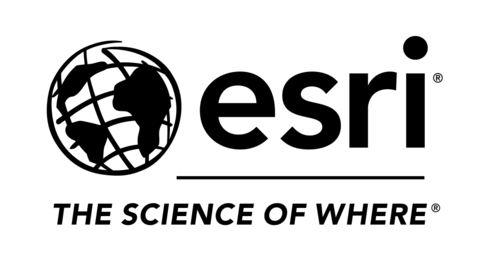Instructions

In a groundbreaking publication, Esri unveils the transformative power of spatial data science, offering professionals a comprehensive guide to revolutionizing data analysis through geographic insights. The newly released book, "Spatial Data Science," provides an innovative roadmap for data scientists and spatial practitioners to harness the potential of big data using cutting-edge geospatial technologies.
Highlighting the dynamic capabilities of the Esri ArcGIS ecosystem, the book demonstrates how mapping, advanced analysis, predictive modeling, and spatial perspectives can unlock unprecedented levels of understanding and knowledge. By integrating geographic intelligence with complex data sets, professionals can now explore and interpret information in ways that transcend traditional analytical boundaries.
Esri continues to lead the geographic information system (GIS) software industry by empowering researchers and analysts to transform raw data into meaningful spatial insights, bridging the gap between complex information and actionable intelligence.
Revolutionizing Data Science: The Spatial Frontier of Geospatial Intelligence
In the rapidly evolving landscape of data science, a groundbreaking approach is emerging that transforms how we understand and interpret complex information. Geographic information systems (GIS) are no longer just mapping tools, but powerful analytical platforms that unlock unprecedented insights across multiple disciplines.
Unleash the Power of Spatial Intelligence: Where Data Meets Geography
The Geospatial Revolution: Transforming Data into Actionable Insights
Modern data scientists are discovering an extraordinary new dimension of analysis that transcends traditional computational boundaries. Spatial data science represents a paradigm shift in how we conceptualize information, integrating geographical context with advanced analytical techniques. By embedding location intelligence into complex data models, researchers can uncover hidden patterns, predict intricate trends, and develop more nuanced understanding of interconnected systems.
The integration of geospatial technologies enables professionals to visualize data in three-dimensional landscapes, revealing relationships that remain invisible through conventional analytical methods. This approach allows for multi-layered interpretations that capture the intricate spatial relationships underlying complex phenomena.
Advanced Mapping: Beyond Traditional Visualization Techniques
Contemporary mapping technologies have evolved far beyond simple geographical representations. Modern geospatial platforms leverage sophisticated algorithms and machine learning capabilities to transform raw data into dynamic, interactive visualizations. These advanced systems can process massive datasets, identifying subtle correlations and generating predictive models that offer unprecedented insights.
Researchers can now explore complex scenarios across multiple domains, from urban planning and environmental management to epidemiological studies and economic forecasting. The ability to integrate diverse data sources and apply spatial analysis techniques provides a comprehensive understanding of intricate systems and their interconnected dynamics.
Technological Ecosystem: The Integrated Approach to Spatial Analysis
The emergence of comprehensive technological ecosystems has revolutionized spatial data science. Platforms like ArcGIS represent sophisticated environments that seamlessly integrate data collection, processing, visualization, and interpretation. These integrated systems enable researchers to move beyond traditional analytical constraints, creating more holistic and nuanced approaches to understanding complex phenomena.
By providing intuitive interfaces and powerful computational capabilities, these technological platforms democratize advanced spatial analysis. Professionals from diverse backgrounds can now leverage sophisticated geospatial tools, breaking down traditional barriers between technical expertise and practical application.
Interdisciplinary Applications: Expanding the Boundaries of Knowledge
Spatial data science transcends traditional disciplinary boundaries, offering transformative insights across multiple fields. Environmental scientists can track ecological changes, urban planners can optimize infrastructure development, epidemiologists can model disease spread, and economists can analyze market dynamics—all through the lens of geographical intelligence.
The interdisciplinary nature of spatial analysis represents a fundamental shift in how we approach complex problem-solving. By integrating location-based perspectives, researchers can develop more comprehensive and nuanced understanding of intricate systems, driving innovation and strategic decision-making.
Future Horizons: The Evolving Landscape of Geospatial Intelligence
As technological capabilities continue to expand, spatial data science stands at the forefront of a profound analytical revolution. The convergence of advanced computing, machine learning, and geographical intelligence promises to unlock unprecedented insights, transforming our understanding of complex global systems.
Professionals and researchers who embrace these emerging technologies will be uniquely positioned to drive innovation, solve complex challenges, and develop more sophisticated approaches to understanding our interconnected world.

